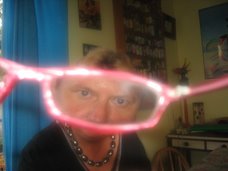Vaccine helps fight cancer
 By VIRGINIA WINDER
By VIRGINIA WINDERTHERE’S a war going on against cancer in Wellington.
At the Malaghan Institute, scientists are making a three-pronged attack on the disease, which causes nearly one third of deaths in New Zealand today.
One group, led by Professor Mike Berridge, is studying cancer stem cells (pictured) where the disease begins.
Another, headed by Professor Franca Ronchese is researching the different cells of our immune system responsible for fighting cancer.
The third group is the one at the frontline battling the disease in real-life patients.
This is the vaccine research group, led by Dr Ian Hermans, which is using the body’s own immune system to clean-up tumour sites in stage three melanoma patients.
Stage three is when the cancer has spread, or migrated to another part of the body and formed a new tumour. This is called a secondary growth or metastases.
It’s time to go into war-speak for better understanding of this campaign.
Imagine our bodies as land being fought over. In this land are many good citizens, which we will call normal cells. But some of these cells turn bad, dividing uncontrollably to form a group of abnormal cells called a tumour. This can invade and destroy the good citizens, taking over the land.
This is when the troops, in the form of the immune system, need to rally.
The “sergeants” are called dendritic cells, who tell the “soldiers”, or T cells, what to attack.
But there’s a problem. Because the cancer originates from normal cells or “good citizens” within the body, the sergeants often don’t recognise the enemy as foreign invaders.
 To be able to fight back, the sergeants need to be able to know who to destroy.
To be able to fight back, the sergeants need to be able to know who to destroy.This is where clinical trials project manager Julie Walton (left) steps in to “train” the dendritic cells of patients to identify the enemy within.
When Walton receives a tumour biopsy with sufficient usable cells from the Wellington Cancer Centre, she begins to prepare a vaccine for the person the cancer has come from.
She first kills the tumour cells so they don’t cause further cancer when injected back into the patient. The dead cells are then fed to dendritic cells grown from the patient’s own blood. The “sergeants” digest the tumour into tiny pieces and learn that this is the enemy.
The result is the vaccine, which is injected back into the patient. This time, the sergeants can recognise the invader and can correctly instruct the T cell soldiers to hunt out and destroy the tumour.
To ensure the immune system is fully informed, each patient in the clinical trial gets 13 vaccinations.
“As far as we know, we don’t know any type of cancer it won’t work with,” Walton says.
But the vaccine is not the start of the process.
Surgery and other cancer treatments are used first, followed by the immune system rearguard action to “clean up the last little bits of tumour remaining”.
“The biggest limiting factor with this is that we believe it only works with smaller tumours,” she says.
It takes 10 days to make the vaccine, and often involves 10- to 12-hour stretches of uninterrupted lab work
Walton says the vaccine research is a collaborated effort with the Queensland Institute of Medical Research in Brisbane and started in 2004.
The trial aims to put 200 volunteer patients through the treatment and is now half way through. New Zealand is covering 10% or 20 of the patients involved and is on track to do so.
Volunteers are referred to the Malaghan Institute by their surgeon or oncologist, or other hospital specialist.
Asked if the trial is proving successful, Walton says it is too early to say.
However, the institute’s website states: “Previous clinical trials run by the Malaghan Institute have proven the validity of a vaccine for cancer, which is created in the laboratory from the patients’ own immune system cells and their cancer.”
Let’s hope the good citizens win.

No comments:
Post a Comment